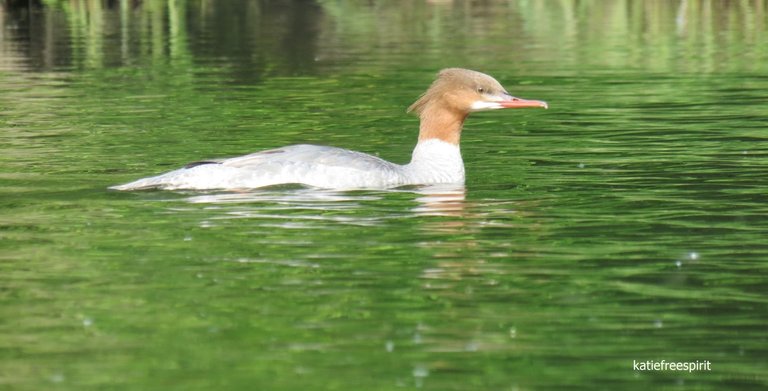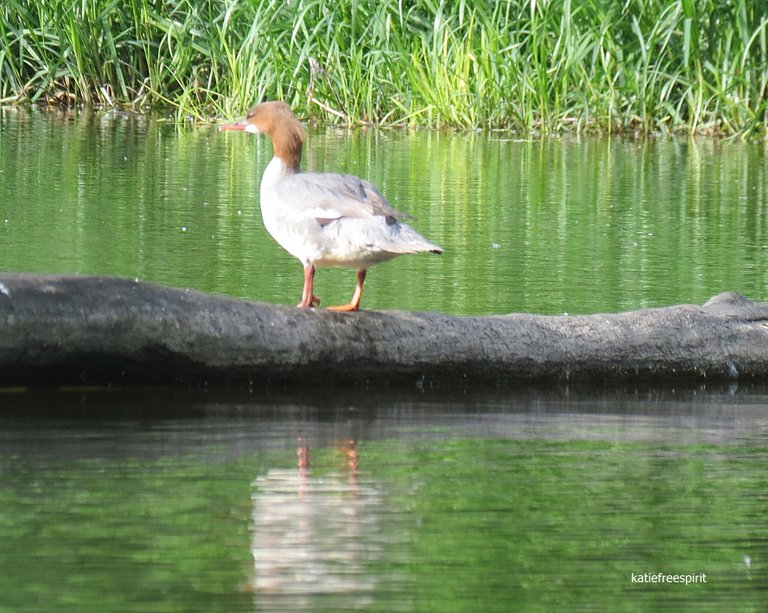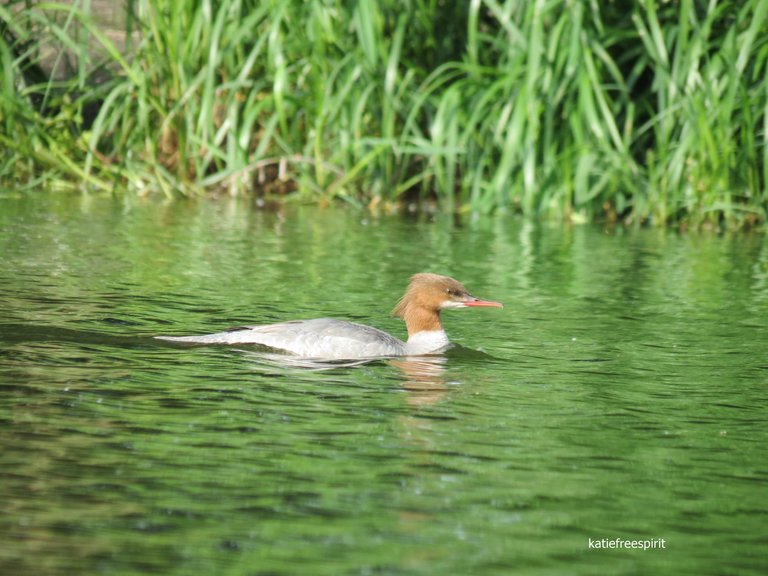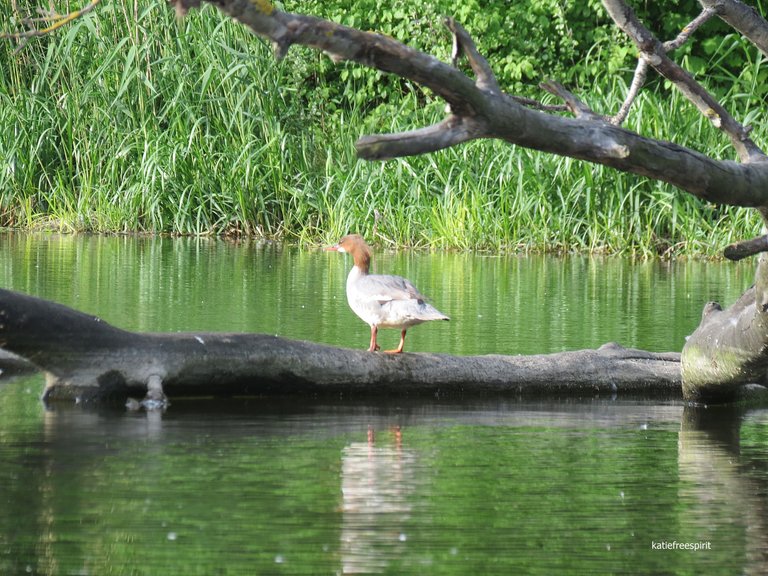The common merganser (North American) or goosander (Eurasian) (Mergus merganser) swimming on a lake and resting on a tree branch / Nurogęś pływająca po jeziorze i odpoczywająca na gałęzi drzewa

I noticed this merganser or goosander when I was kayaking on Lake Wilanów. I had never seen this bird live before, and now, like me, it was swimming on the lake. Female Merganser. Elegant, slender, most of her body was light gray, her neck and head were light brown, and she had a little mohawk on the back of her head.
Zauważyłam tę nurogęś, gdy pływałam kajakiem po jeziorze Wilanowskim. Nigdy wcześniej nie widziałam tego ptaka na żywo, a teraz podobnie jak ja pływała ona po jeziorze. Samica nurogęsi. Elegancka, smukła, większość jej ciała miała jasno-szarny kolor, a szyja i głowa były jasnobrązowe, z tyłu głowy miała jakby małego irokeza.
She swam fast and then climbed onto a huge branch that lay in the water. She walked on it and watched the surroundings. Now I have noticed that her body is much thicker and resembles that of a duck or maybe a goose, as part of its polish name indicates. I tried to swim quietly so as not to scare her. Unfortunately, at one point she noticed me and flew away from me.
Płynęła szybko, a następnie weszła na ogromną gałęź, która leżała na wodzie. Chodziła po niej i obserwowała okolicę. Teraz zauważyłam, że jej ciało jest dużo grubsze i przypomina ciało kaczki, a może gęsi, jak wskazuje część jej nazwy. Starałam się płynąć cicho, żeby jej nie spłoszyć. Niestety w pewnym momencie mnie zauważyła i poleciała daleko ode mnie.
The Merganser (or goosander) feeds on small freshwater and marine fish and other small aquatic animals that are only complementary, such as molluscs, crustaceans, insects and their larvae that it catches by diving. On the beaks of mergansers, there are transverse horn cloves, which, together with its bend at the end, make it easy to catch slippery and agile fish. First, it dips its head and looks for small fish up to 10 cm in length (it can even catch a quarter of a meter), choosing the most numerous. The advantage of the fish diet is atypical compared to other duck species. The Merganser hunts singly or in groups.
Source: Wikipedia
Nurogęś żywi się drobnymi rybami słodkowodnymi i morskimi oraz innymi drobnymi zwierzętami wodnymi, które pełniące rolę tylko uzupełniającą jak mięczaki, skorupiaki, owady i ich larwy, które łowi nurkując. Na dziobach nurogęsi znajdują się poprzeczne rogowe ząbki, które wraz z jego zagięciem na końcu powodują, że mogą łatwo chwytać śliskie i zwinne ryby. Najpierw zanurza głowę i wypatruje małych ryb do 10 cm długości (może nawet łapać ćwierćmetrowe), wybierając te najliczniejsze. Przewaga rybiej diety jest nietypowa w porównaniu z innymi gatunkami kaczek. Nurogęś poluje pojedynczo lub grupowo.
Źródło: Wikipedia



Congratulations @katiefreespirit! You have completed the following achievement on the Hive blockchain and have been rewarded with new badge(s) :
Your next target is to reach 1750 replies.
You can view your badges on your board and compare yourself to others in the Ranking
If you no longer want to receive notifications, reply to this comment with the word
STOPCheck out the last post from @hivebuzz:
Support the HiveBuzz project. Vote for our proposal!
We appreciate your work and your post has been manually curated by zoology team (oscurity,nelinoeva) on behalf of Amazing Nature Community. Keep up the good work!
Good post as always! Thanks for this information, it is a very curious species!
Thanks for the nice words :) It was a wonderful surprise to be able to see this bird because some time ago I saw an article in the newspaper that the policemen from my city stopped the traffic and helped the mergansers with ducklings cross the street and I was hoping to meet some merganser live and it worked :)
nice post about Mergus merganser
We appreciate your work and your post was manually curated by @none! from the DNA team!
Reach us on Discord to learn more about the project!
Thanks @none ☺️